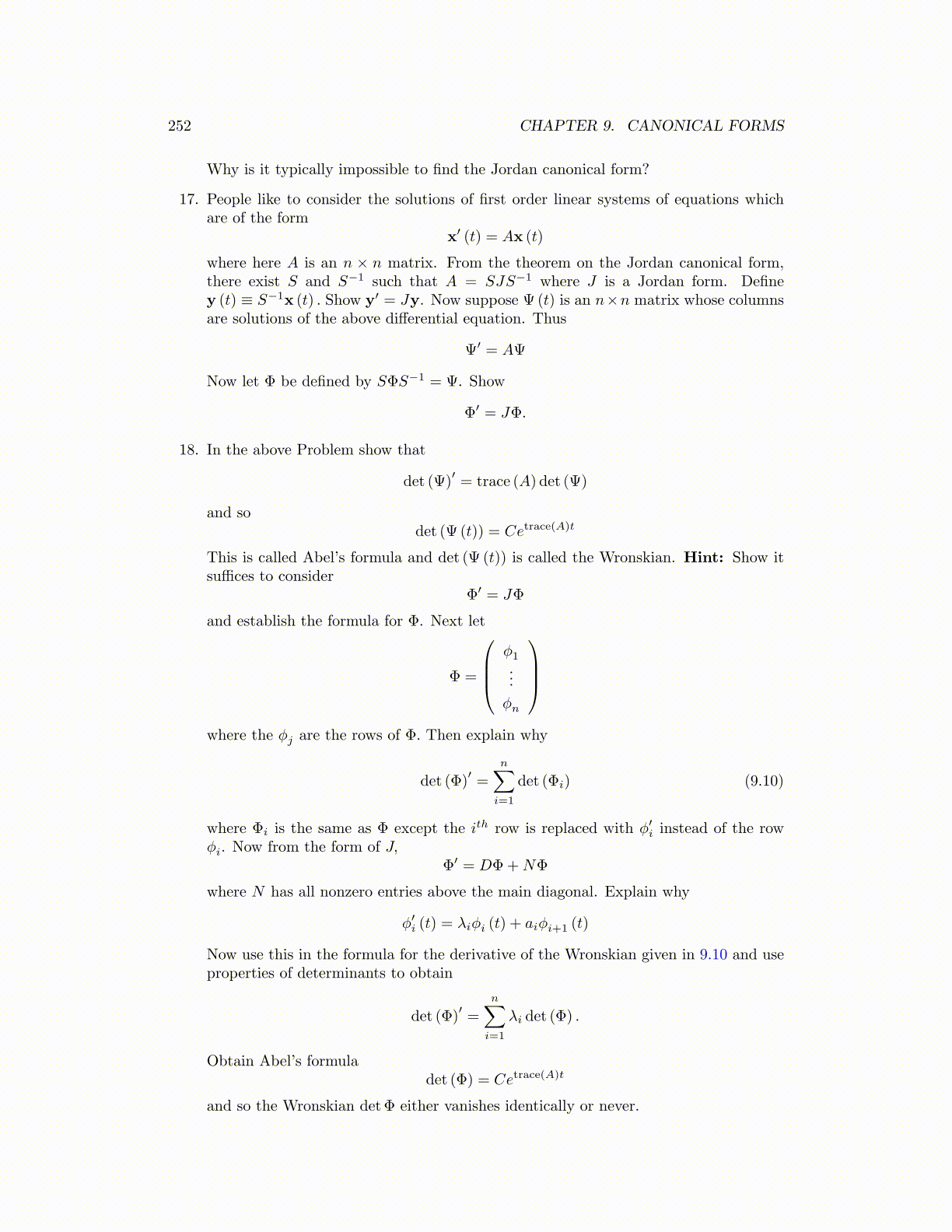
252 CHAPTER 9. CANONICAL FORMS
Why is it typically impossible to find the Jordan canonical form?
17. People like to consider the solutions of first order linear systems of equations whichare of the form
x′ (t) = Ax (t)
where here A is an n × n matrix. From the theorem on the Jordan canonical form,there exist S and S−1 such that A = SJS−1 where J is a Jordan form. Definey (t) ≡ S−1x (t) . Show y′ = Jy. Now suppose Ψ (t) is an n×n matrix whose columnsare solutions of the above differential equation. Thus
Ψ′ = AΨ
Now let Φ be defined by SΦS−1 = Ψ. Show
Φ′ = JΦ.
18. In the above Problem show that
det (Ψ)′= trace (A) det (Ψ)
and sodet (Ψ (t)) = Cetrace(A)t
This is called Abel’s formula and det (Ψ (t)) is called the Wronskian. Hint: Show itsuffices to consider
Φ′ = JΦ
and establish the formula for Φ. Next let
Φ =
ϕ1...
ϕn
where the ϕj are the rows of Φ. Then explain why
det (Φ)′=
n∑i=1
det (Φi) (9.10)
where Φi is the same as Φ except the ith row is replaced with ϕ′i instead of the rowϕi. Now from the form of J,
Φ′ = DΦ+NΦ
where N has all nonzero entries above the main diagonal. Explain why
ϕ′i (t) = λiϕi (t) + aiϕi+1 (t)
Now use this in the formula for the derivative of the Wronskian given in 9.10 and useproperties of determinants to obtain
det (Φ)′=
n∑i=1
λi det (Φ) .
Obtain Abel’s formuladet (Φ) = Cetrace(A)t
and so the Wronskian detΦ either vanishes identically or never.